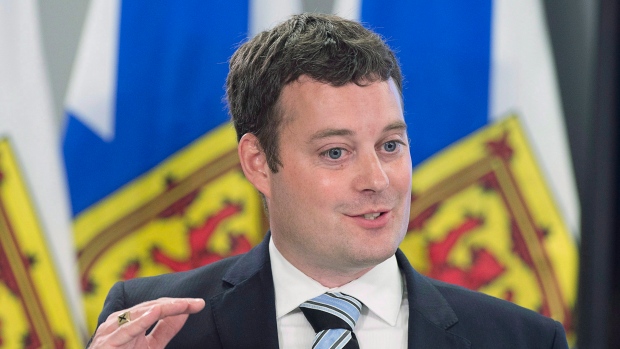Apr 27, 2017
Nova Scotia brings in middle class tax cut, surplus in pre-election budget
, The Canadian Press

HALIFAX -- Nova Scotia's Liberal government is bringing in a broad middle-class tax cut as it tables a budget with a $25.9-million surplus, seeding the ground for what many believe is an imminent election call.
The surplus in the $10.5-billion budget introduced Thursday means back-to-back black ink for the government despite finishing fiscal 2016-17 with a $129-million spending spree.
The key feature in the 2017-18 document is a pledge to reduce taxes for 500,000 low and middle-income earners — about half the province's population — by increasing the basic personal exemption by up to $3,000 for taxable income up to $75,000.
The change in the tax exemption would mean an average decrease in taxes of about $160 for the roughly half million people eligible for the cut, with the amount of saved taxes falling as income rises.
The measure beginning in January next year would also mean 60,000 poor Nova Scotians will no longer pay provincial income taxes.
Finance Minister Randy Delorey emphasized the Liberals' ability to bring in consecutive surplus budgets for the first time in a decade, in a phrase that will likely evolve into a core part of the party's election message.
"The budget reduces taxes, putting money back in the pockets of middle-class Nova Scotians and those Nova Scotians who need it most," Delorey said during a news conference.
However, the budget plan depends heavily on the Liberals either imposing or negotiating a contract with public sector workers that would keep wage increases to one per cent in 2017-18.
Officials estimate the cost for the middle class tax cut in the 2017-18 budget will be $22 million, because it only begins on Jan. 1.
However, the annual cost to the treasury will be $85 million. In addition, a previously announced tax cut on small business income will cost about $14 million a year.
There are also a wide array of small spending increases, many of them previously released to the public, including $38 million for affordable housing in partnership with Ottawa.
The province is also offering $5.1-million more for home care and $3.2 million for nursing home food and recreation budgets, a measure that comes after a period of cutting the operating budget to long-term care.
There is $3.7 million to add 30 new sites with early learning programs for about 750 four-year olds, an expansion from the existing eight sites — with about 25 to 30 children at each site.
The Education Department will also spend $1.1 million to expand breakfast programming to schools.
The health budget is projected to rise almost two per cent, to about $4.2 billion — or about four of every 10 dollars spent by the province as its population continues to be among the country's oldest.
The increases include a bump in funding for the education of family doctors, with money for 10 new residency places at Dalhousie University's medical school.
The province will also spend about $6 million for new collaborative care centres — an already announced measure that comes as the Liberals have conceded they've failed in an election promise to provide each citizen with access to a family doctor.
However, figures released for the 2016-17 budget show spending on health budgets comes after several years of the province spending less than planned to upgrade aging hospitals.
The Health Department for the past year was $26 million below budget, as it delayed spending on improvements to facilities and spent $6.6 million less than expected on home care.
The net debt is about $15 billion, which is $15,900 per person as of April 1 last year.
The province is projecting a series of surpluses extending into 2020-21, with the goal of reducing debt to 30 per cent of gross domestic product by 2024.